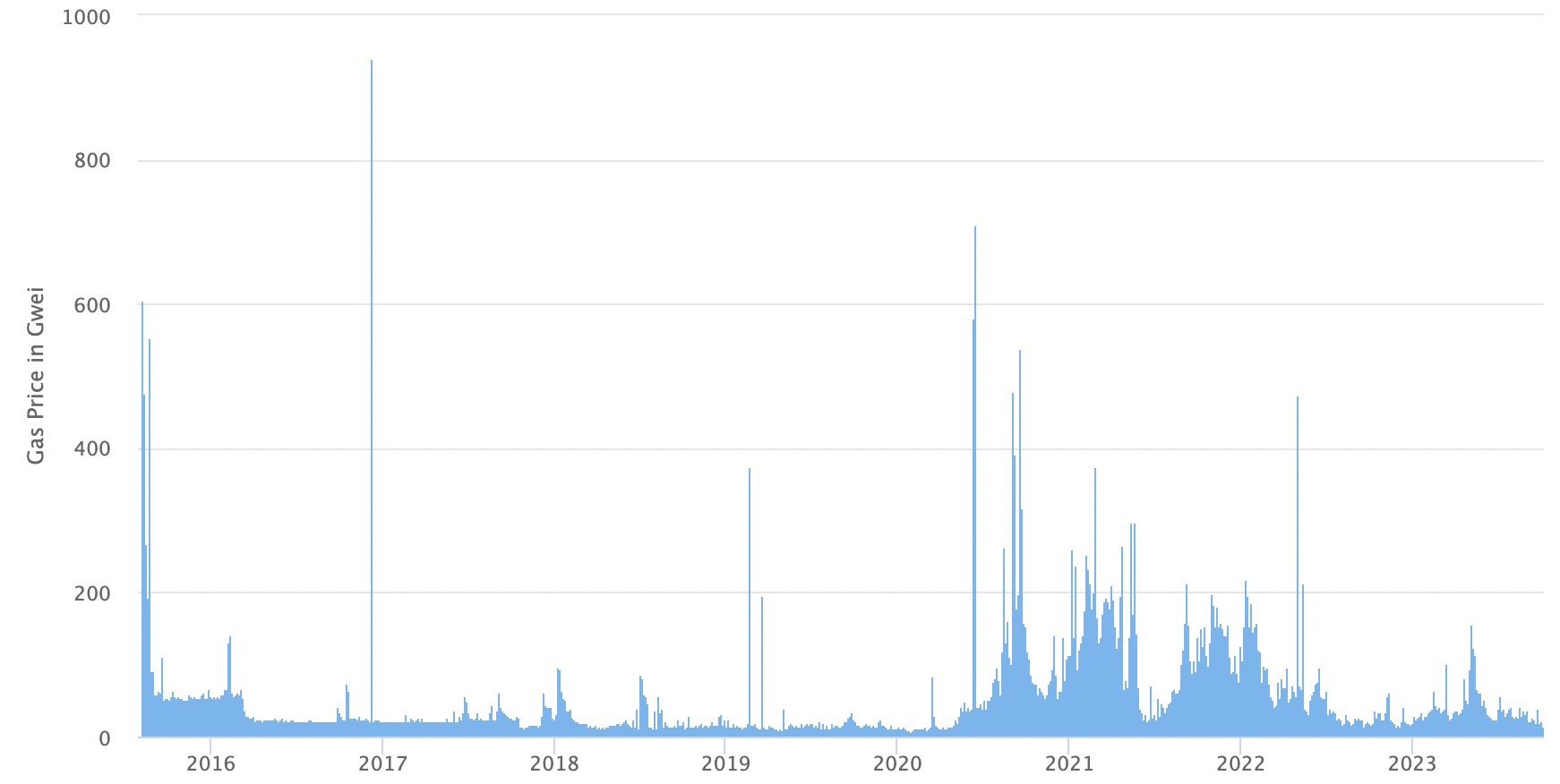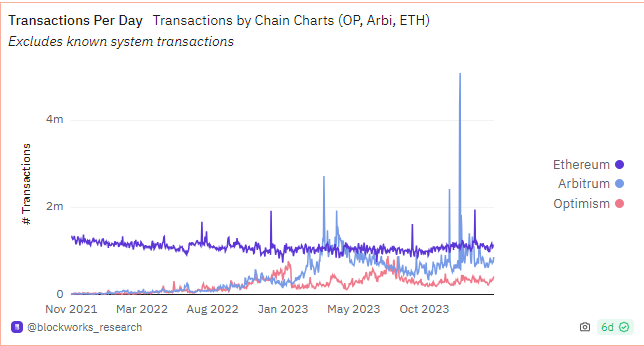Table of Contents
The evolution of blockchain technology presents a key challenge: scalability. The early days of Bitcoin and Ethereum saw these blockchains able to handle the small volume of transactions.
As Bitcoin and Ethereum gained wider acceptance, the effect on these blockchains saw multiple network congestion events, resulting in high gas fees, especially on Ethereum. The need to process transactions faster and more efficiently became increasingly apparent leading to the creation of Layer 2 blockchains.
Layer 2 blockchains offer a promising avenue for addressing these scalability issues while preserving the security and decentralization that are fundamental to blockchain technology.
Unleashing the Full Potential of Smart Contracts
Since its inception, Ethereum has captured the imagination of developers and entrepreneurs alike with its ability to support smart contracts – self-executing contracts with the terms of the agreement directly written into code. This innovation has paved the way for a wide range of decentralized applications (dApps) spanning finance, gaming, supply chain management, and more.
However, Ethereum's success has also led to congestion on its network, resulting in high fees and slower transaction times during periods of peak demand. As the demand for decentralized applications continues to grow, scaling Ethereum to accommodate this demand has become a top priority for developers and stakeholders within the ecosystem.

Layer 2 solutions approach this scaling challenge on Ethereum by moving some of the transaction processing off the main blockchain while still leveraging its security and decentralization. These blockchains operate alongside the main Ethereum blockchain, providing a way to process transactions quickly and at a lower cost.
One of the most popular Layer 2 solutions for Ethereum is the implementation of sidechains or "rollups." Rollups bundle multiple transactions into a single transaction, which is then settled on the Ethereum mainnet. By aggregating transactions off-chain and submitting only the essential information to the Ethereum blockchain, rollups significantly reduce congestion and gas fees while maintaining the security guarantees of the underlying blockchain.
Prominent Layer 2 Blockchain Solutions
Optimistic Rollups (e.g. Optimism and Arbitrum):
Optimistic rollups are gaining traction for their potential to significantly enhance Ethereum's scalability while maintaining compatibility with existing smart contracts. Optimism (OP) and Arbitrum (ARB) are two projects that utilize optimistic rollup technology to aggregate and process transactions off-chain before submitting them to the Ethereum mainnet, thus reducing congestion and gas fees.
According to this analysis of transactions per day by Blockworks Research, transactions on Optimism and Arbitrum combined has surpassed Ethereum transactions alone since February. For example, on Feb. 20, Optimism recorded 425,266 and Arbitrum captured 871,993 transactions on the same day for a combined figure of 1,297,259. On the same day, Ethereum's total number of transactions was 1,149,756.

ZK-Rollups (e.g. Loopring and zkSync)
Zero-knowledge rollups (ZK-Rollups) leverage zero-knowledge proofs to compress transaction data into succinct proofs, enabling high throughput and scalability while ensuring strong security guarantees. Projects like Loopring and zkSync are pioneering ZK-Rollup technology, offering solutions for decentralized exchange (DEX) trading and token transfers with enhanced privacy and efficiency.
State Channels (e.g., Lightning Network and Connext)
State channels enable off-chain interactions between participants, only settling the final state on the main blockchain when necessary. Solutions like the Lightning Network for Bitcoin and Connext for Ethereum provide fast and low-cost micropayments, making them suitable for use cases such as streaming payments, gaming, and decentralized finance (DeFi).
Sidechains (e.g., Polygon and xDai)
Sidechains operate independently of the main blockchain but remain interoperable, allowing for faster and cheaper transactions. Platforms like Polygon (formerly Matic Network) and xDai leverage sidechain technology to provide scalable infrastructure for Ethereum-compatible dApps, including gaming, NFTs, and DeFi applications.
The Road Ahead for Layer 2 Solutions
Layer 2 solutions hold immense promise for Ethereum and the broader blockchain ecosystem, offering a pathway to overcome scalability limitations without compromising on security or decentralization.
However, key challenges remain, including interoperability between different Layer 2 solutions, user experience improvements, and ensuring adequate decentralization and security guarantees with Layer 2 solutions playing an increasingly integral role in maximizing Ethereum’s full potential.
Layer 2 blockchains represent a convergence of innovation and pragmatism in the quest for scalable, decentralized applications. By leveraging the power of Layer 2 solutions, Ethereum is poised to usher in a new era of blockchain scalability, enabling a diverse array of applications and use cases to thrive on its platform.









